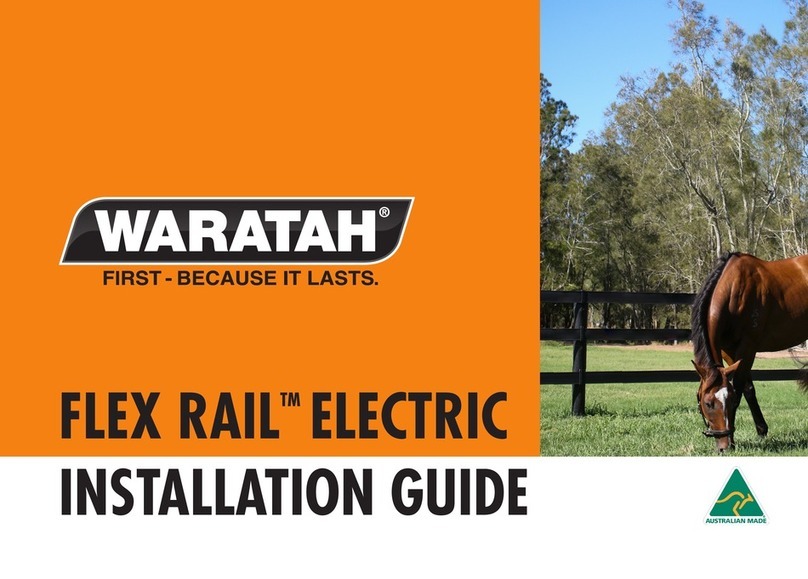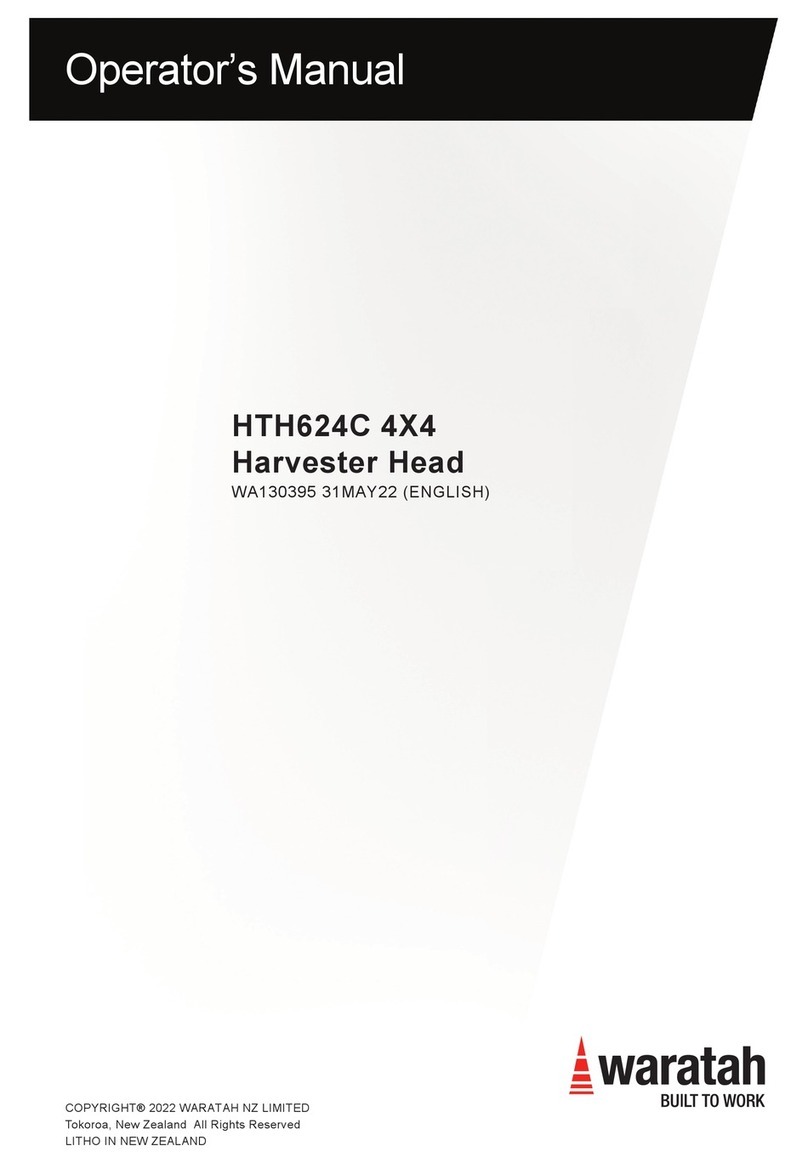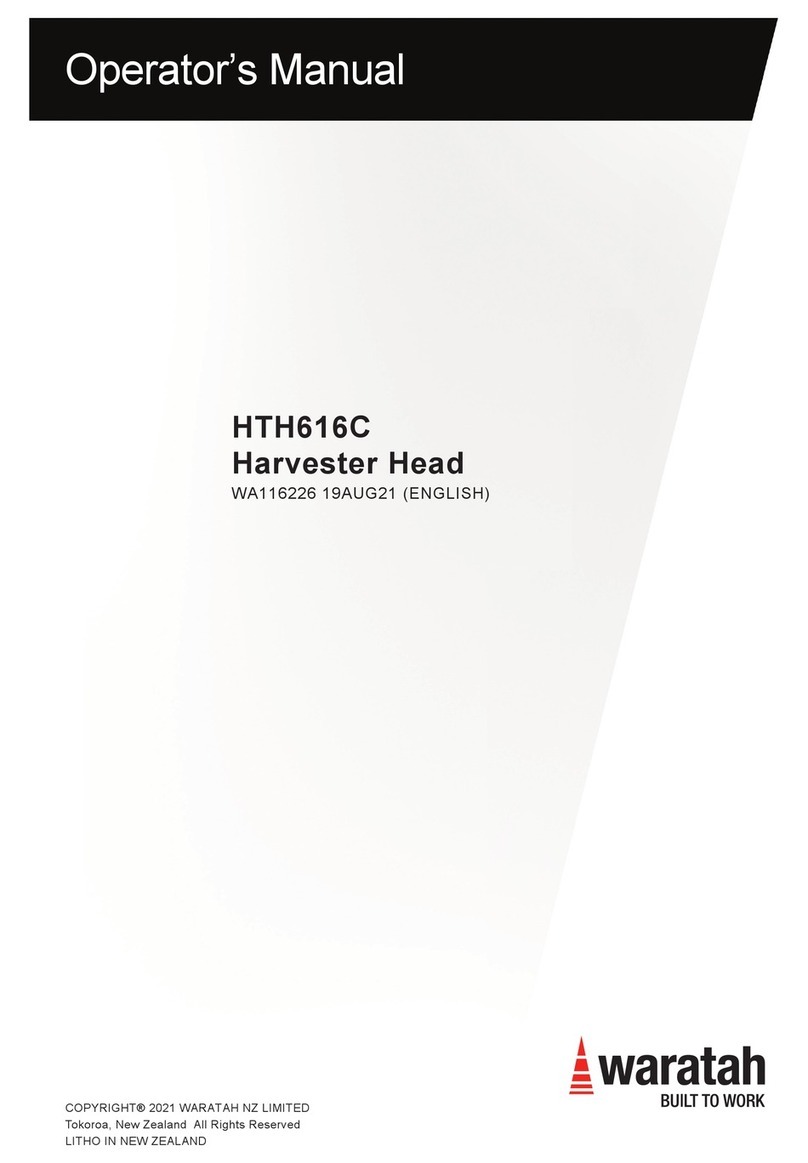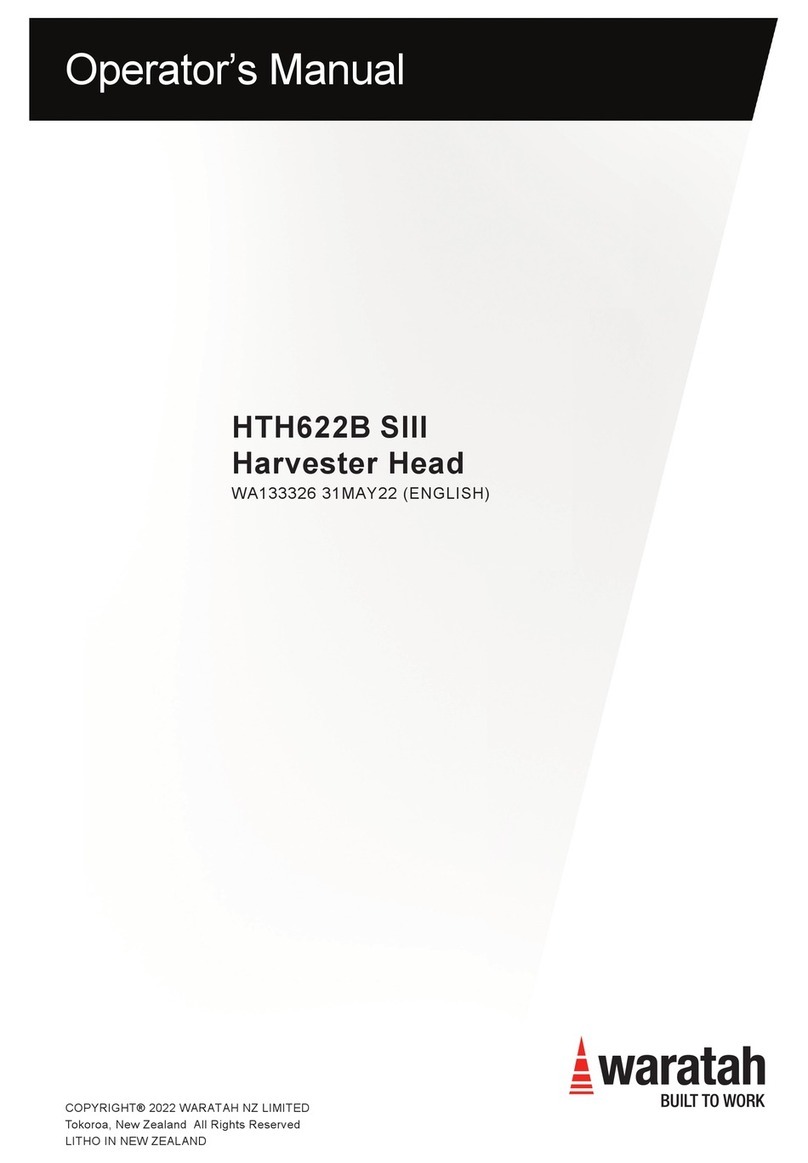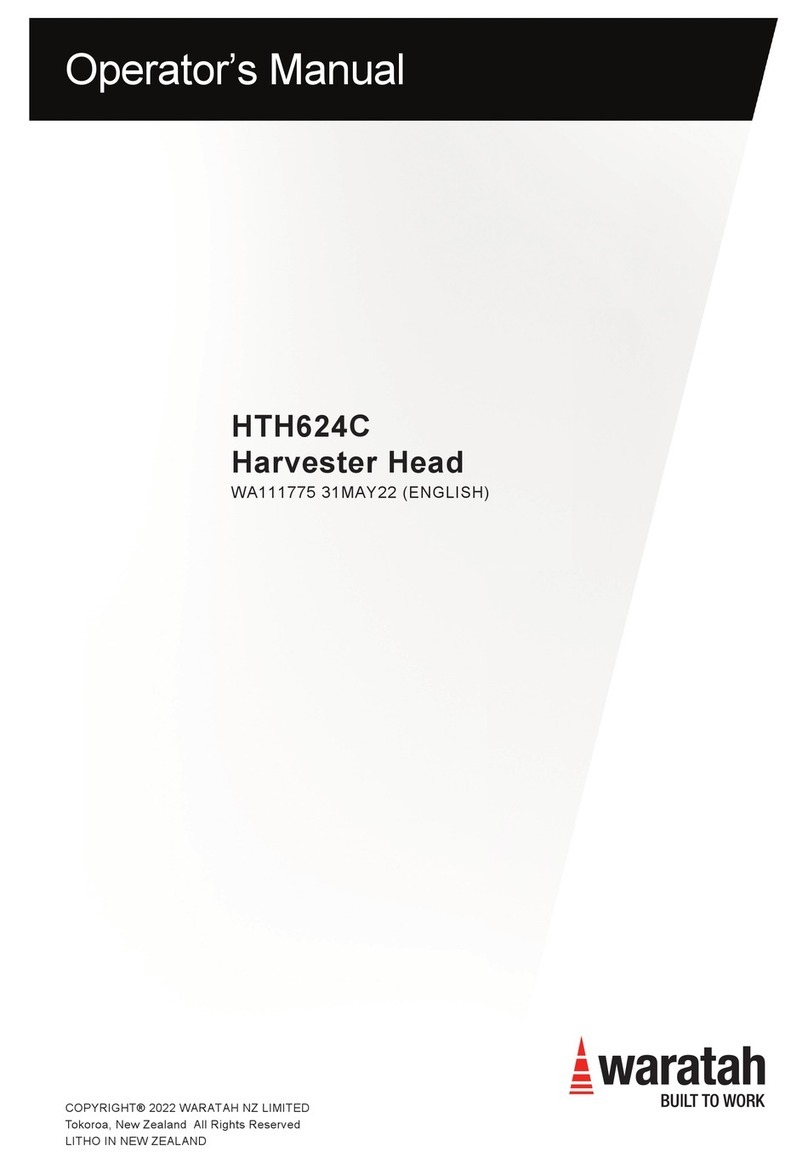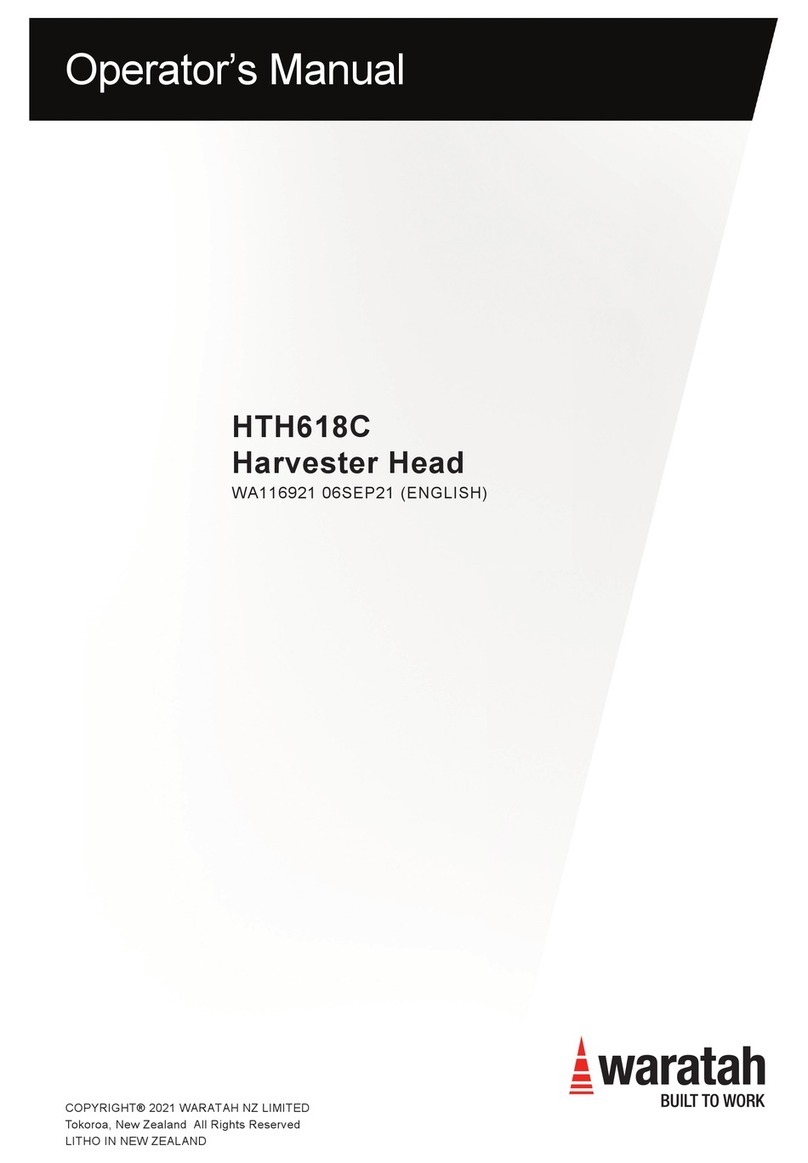
Foreword
READ THIS MANUAL carefully to learn how to operate
and maintain your machine correctly. Failure to do so
could result in personal injury or equipment damage.
This manual and the safety signs on your machine may
also be available in other languages. (See your Waratah
dealer to order.)
THIS MANUAL SHOULD ALWAYS remain with the
machine, even if you sell the machine. It provides
detailed operating and maintenance instructions as well
as safety information and equipment data.
MEASUREMENTS in this manual are given in both
metric and imperial equivalents. Use only correct
replacement parts and fasteners. Fasteners may
require a specic metric or inch wrench.
RIGHT-HAND AND LEFT-HAND sides are determined
by facing in the direction of forward travel.
WRITE PRODUCT IDENTIFICATION NUMBERS in the
machine numbers section on page 3-2-1. Accurately
record all numbers to help in tracing the machine should
it be stolen. Your dealer also requires these numbers for
ordering of parts. File the identication numbers in a
secure place off the machine.
WARRANTY is provided as part of Waratah New
Zealand Limited’s (“Waratah’s”) support program for
customers who operate and maintain their equipment as
described in this manual. The warranty is explained
below.
Waratah will back its products where defects appear
within the warranty period. Waratah may also provide
eld improvements at times, often without charge, even
if the product is out of warranty. If the equipment is
abused, or modied to alter its performance from
published specications, the warranty will become void
and eld improvements may be withheld.
T7M7G6M,00004BA-19-10OCT21
Copyright
These original instructions are the property of Waratah
New Zealand Limited.
All information, illustrations, and specications provided
in this manual are based on the latest information
available at the time of publication. We reserve the right
to make changes at any time and without notice.
COPYRIGHT © 2022
WARATAH NEW ZEALAND LIMITED
Tokoroa, New Zealand
All rights reserved.
Issue date: May 2022
T7M7G6M,0000807-19-30MAY22
General Information
This manual contains instructions for the maintenance
of the HTH616C SIII harvester head. If you have
questions about the instructions, please consult your
local dealer for more detailed information.
Every effort was made to ensure that the information
contained in this manual was accurate at the time of
publication. Waratah, however, accepts no responsibility
for any errors or consequences arising from them.
Waratah also reserves the right to revise product
specications, instructions, etc. as required by ongoing
product improvements and updates.
All service and repairs should be carried out by qualied
service personnel, or an authorized repair shop with
suitable tools and lifting devices, using Waratah-
approved parts. Waratah takes no responsibility for
damages that may arise through instructions not being
followed or through improper use of the product.
T7M7G6M,0000363-19-18AUG21
Manual Replacement
When re-ordering this manual, quote the part number
“WA135210” and the date of publication.
T7M7G6M,0000364-19-28FEB20
Warranty
Terms: Unless otherwise stated, Waratah New Zealand
Limited (‘Waratah’) warrants each new attachment to be
free of failure caused by defective material or
workmanship for a period of one (1) year or two
thousand (2000) hours, whichever rst occurs, following
date of delivery of the product to the original retail
customer (user).
Warranty coverage for parts on Waratah’s forestry
attachments is for 12 months from the date of
installation by a Waratah-approved dealer, or 180 days
from the date of delivery if the customer buys the part
over the counter.
Interruptions: Only one warranty interruption, lasting
no more than six (6) months, will be accepted during the
warranty period.
Validity: To validate this warranty, attachment
installation must be done by an authorised dealer on a
carrier that meets Waratah’s specications, prescribed
pre-delivery and start-up inspections must be
completed, and the customer must complete, sign, and
submit a Warranty Registration Form to the selling
Waratah Distribution Centre (WDC).
Obligations: Waratah’s sole obligation under this
warranty is limited to repairs of failures due to faulty
workmanship, or the repair or replacement of defective
parts. These actions are without charge, whether in the
eld, or at Waratah’s factory, warehouse, or an
General
0-1-1







